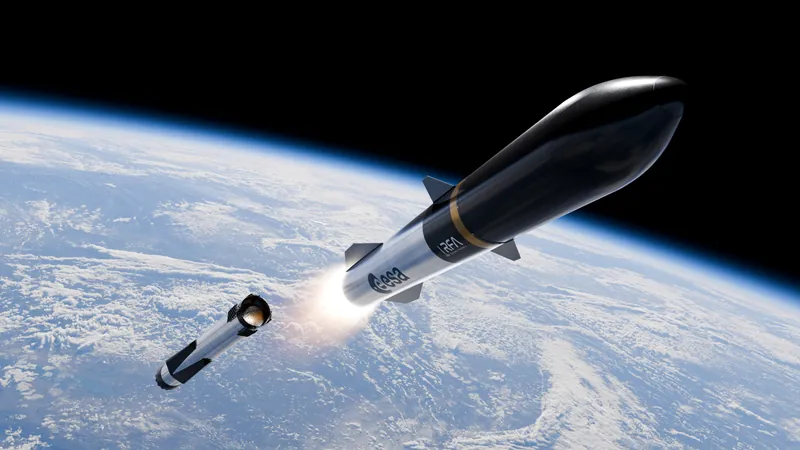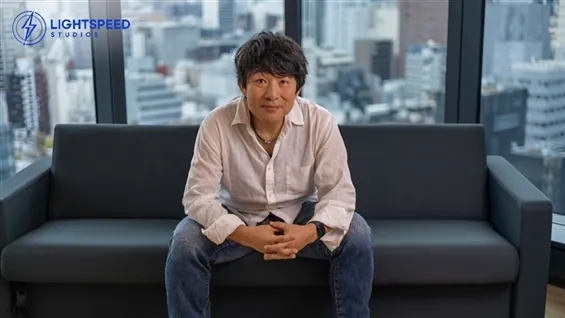
Europe Eyes the Stars: Revolutionary Rocket Designs Spark a New Era in Space Exploration!
2024-11-13
Author: Wei
Introduction
European aerospace industry leaders are on the brink of a groundbreaking achievement as they respond to a call for innovative rocket designs capable of launching substantial payloads into space. This initiative is not just about exploring the cosmos; it's also about doing so sustainably and cost-effectively, paving the way for frequent space flights.
ESA's Call for Innovation
In a bold move, the European Space Agency (ESA) invited companies to submit designs for a cutting-edge rocket that balances power, capacity, and environmental responsibility. After rigorous evaluations, two frontrunners emerged: ArianeGroup and Rocket Factory Augsburg.
Ambitious Goals and Future Projects
ESA has outlined ambitious goals that include launching advanced projects such as solar electricity generators and data centers into orbit. These visionary concepts, which have already garnered attention in the European space sector, demand significant hardware transport to Earth’s orbit—something only a powerful and efficient rocket can achieve.
Feasibility and Challenges
The recent Protein study emphasized the feasibility of such groundbreaking rockets within the next decade. However, the journey will not be easy. It calls for ongoing technological advancements, extensive testing, and a comprehensive approach to infrastructure, funding, and legal requirements. The study advocates for a transition towards more environmentally friendly fuel sources, highlighting the importance of semi-reusable rockets that utilize liquid fuels derived from low-carbon methods such as bio-methane and hydrogen.
Logistical Considerations
One surprising aspect of the findings reveals that practical considerations, like the width of the rocket, can pose logistical challenges. Rockets exceeding four meters in diameter must navigate Europe’s vast network of roads and bridges—many of which simply cannot accommodate these beasts on the move. Fueling processes will also need careful planning, as the energy demands for these ambitious projects will be immense.
Current Technology Gaps
Furthermore, a critical gap has been identified in Europe's current rocket technology—a high-thrust staged-combustion engine. Unlike their global competitors, Europe has yet to fully develop this powerful engine technology. ESA's innovative projects, such as 'Thrust!' aimed at creating more efficient engines, alongside ArianeGroup and Rocket Factory Augsburg’s ongoing engine initiatives (Prometheus and Helix), are steps towards closing this gap.
Conclusion and Future Outlook
As European nations proudly maintain their autonomy in access to space, thanks to the operational Ariane 6 and Vega-C rockets, the pressing question arises: Are we ready to expand our capabilities for broader and more efficient access to outer space? The Protein study indicates that a future packed with possibilities is within reach, but it will take strong political commitment to propel these ideas into reality.
With soaring aspirations and significant technological advancements on the horizon, Europe stands at the threshold of a new era in space exploration that could redefine its role in the global aerospace landscape. Will Europe seize the opportunity to lead in space innovation? Time will tell!



 Brasil (PT)
Brasil (PT)
 Canada (EN)
Canada (EN)
 Chile (ES)
Chile (ES)
 España (ES)
España (ES)
 France (FR)
France (FR)
 Hong Kong (EN)
Hong Kong (EN)
 Italia (IT)
Italia (IT)
 日本 (JA)
日本 (JA)
 Magyarország (HU)
Magyarország (HU)
 Norge (NO)
Norge (NO)
 Polska (PL)
Polska (PL)
 Schweiz (DE)
Schweiz (DE)
 Singapore (EN)
Singapore (EN)
 Sverige (SV)
Sverige (SV)
 Suomi (FI)
Suomi (FI)
 Türkiye (TR)
Türkiye (TR)